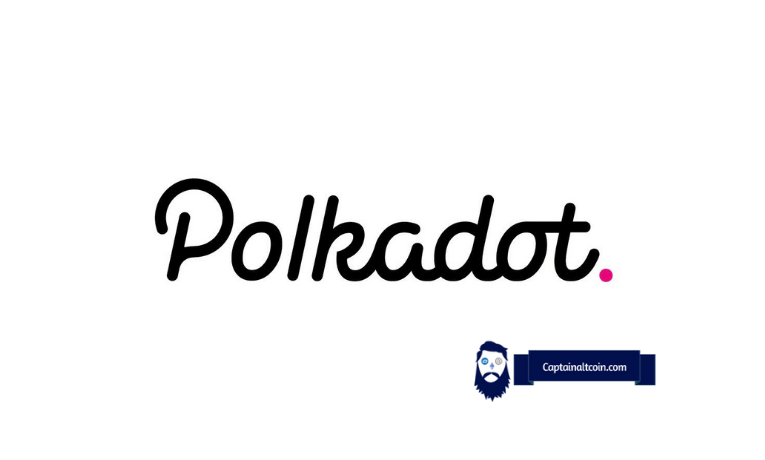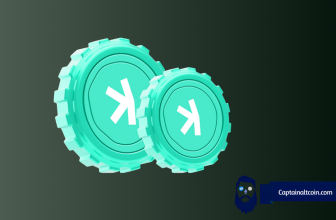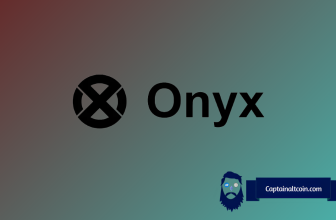
News and chats have been going around Polkadot for quite some time now, and today I will be glad to tell you about this cryptocurrency
What you'll learn 👉
At first, what is Polkadot exactly?
Polkadot is unique crypto, designed by Gavin Wood, co-founder of Ethereum. It was designed to act as a bridge, it’s connecting different blockchains. Polkadot allows any app developer to establish their own blockchain that can communicate with other ledgers, rather than operating apps through smart contracts, relatively short pieces of code, which are operated on, for example, the Ethereum blockchain. It allows customers to quickly and simply create a blockchain using their Substrate framework.
Having your own blockchain is great, but most projects will only be able to use it if they can connect with the greater blockchain community. A blockchain project would need to build significant infrastructure on its own to do this safely and effectively, and many initiatives have failed because they were unable to provide the necessary seamless connectivity.
Also, Polkadot’s native token, DOT, can be used to stake, or validate, transactions on the network or connect new transaction chains, in a similar way to Ethereum’s ether token.
You can buy Polkadot on Binance, Kucoin, Cex.io or Coinbase. You can store it on Ledger Nano X, Polkawallet, Guarda.
Top projects built on Polkadot
Except for Polkadot’s own token, there are some other projects, built with Polkadot and Substrate.
1. Acala
Acala is one of the flagship DeFi platforms built on Polkadot. It combines a stablecoin protocol, liquid staking, and an AMM-style DEX into a single parachain. This all-in-one financial hub gives users access to decentralized finance tools with Polkadot-level scalability and security. Its native ACA token is widely used in the ecosystem for governance and utility. Acala’s vision is to create a decentralized financial infrastructure for the Polkadot ecosystem and beyond.
Explore more at: https://acala.network
2. Centrifuge
Centrifuge brings real-world assets (RWAs) like invoices and real estate into the world of DeFi. By tokenizing these assets, Centrifuge enables businesses to unlock liquidity and financing through decentralized protocols. It’s one of the earliest projects to bridge traditional finance with blockchain, all while leveraging Polkadot’s interoperability.
Explore more at: https://centrifuge.io
3. MeWe
MeWe is a privacy-focused social network using Polkadot technology to offer users complete control over their personal data. Unlike mainstream platforms, MeWe doesn’t monetize your data. With decentralization at its core, MeWe aims to revolutionize digital communication by protecting user privacy and enabling censorship-resistant interactions.
Explore more at: https://mewe.com
4. Ajuna Network
Ajuna Network is a decentralized gaming platform that allows developers to integrate blockchain features into traditional games. With support for Unity and Unreal engines, Ajuna offers true digital ownership and secure in-game asset management on Polkadot. It’s a promising bridge between Web2 gaming and Web3.
Explore more at: https://ajuna.io
5. Polkadex
Polkadex is a decentralized exchange that blends the performance of centralized trading platforms with the trustless architecture of DEXs. With order books, low latency, and high throughput, Polkadex is built for serious traders looking for speed and full custody of assets. It’s also a launchpad for new tokens.
Explore more at: https://polkadex.trade
6. Public Pressure
Public Pressure is a media and music platform that leverages blockchain to support independent artists and labels. It empowers creators with decentralized tools for distribution, rights management, and monetization—while connecting fans directly to the music they love.
Explore more at: https://publicpressure.io
7. Zenlink
Zenlink is a cross-chain DEX protocol aiming to unify trading across the Polkadot ecosystem. With composability at its core, Zenlink enables seamless liquidity sharing and aggregation between parachains. It is positioned to be a central hub for DeFi on Polkadot.
Explore more at: https://zenlink.pro
8. Moonbeam (GLMR)
Moonbeam is a smart contract parachain that brings Ethereum compatibility to Polkadot. Developers can easily deploy Solidity-based dApps without modifying their existing code. Moonbeam also supports full Ethereum RPC, making integration straightforward for existing Web3 tools.
Explore more at: https://moonbeam.network
9. Kusama (KSM)
Kusama is Polkadot’s experimental sister network, often used as a testing ground for new technologies before they hit the Polkadot mainnet. With a faster governance process and lower barriers to entry, Kusama is ideal for early-stage projects that want to move quickly.
Explore more at: https://kusama.network
10. Unique Network
Unique Network is a leading NFT platform in the Polkadot ecosystem, offering scalable, eco-friendly infrastructure for digital ownership. It supports advanced features like custom NFT economies, freemium models, and nested NFTs. It’s the go-to solution for projects building NFT-based applications.
Explore more at: https://unique.network
In conclusion
“Polkadot development is on track to deliver the most robust platform for security, scalability, and innovation” – as developers say on their own website. And after hours of researching and digging into this project, I must agree with that. Polkadot and projects, based on it are truly offering an amazing, unique experience for users and developers.
Polkadot has so far outgrownpopular Bitcoin in 2021 due to its incredible price fluctuations. In fact, in May 2021, it hit an all-time high of 49 dollars. DOT began the year at nine dollars before additional searches due to a bullish run. It will surely be a great investment, as this is objectively the most promising and modern project among cryptocurrencies and blockcheain. Take care!







